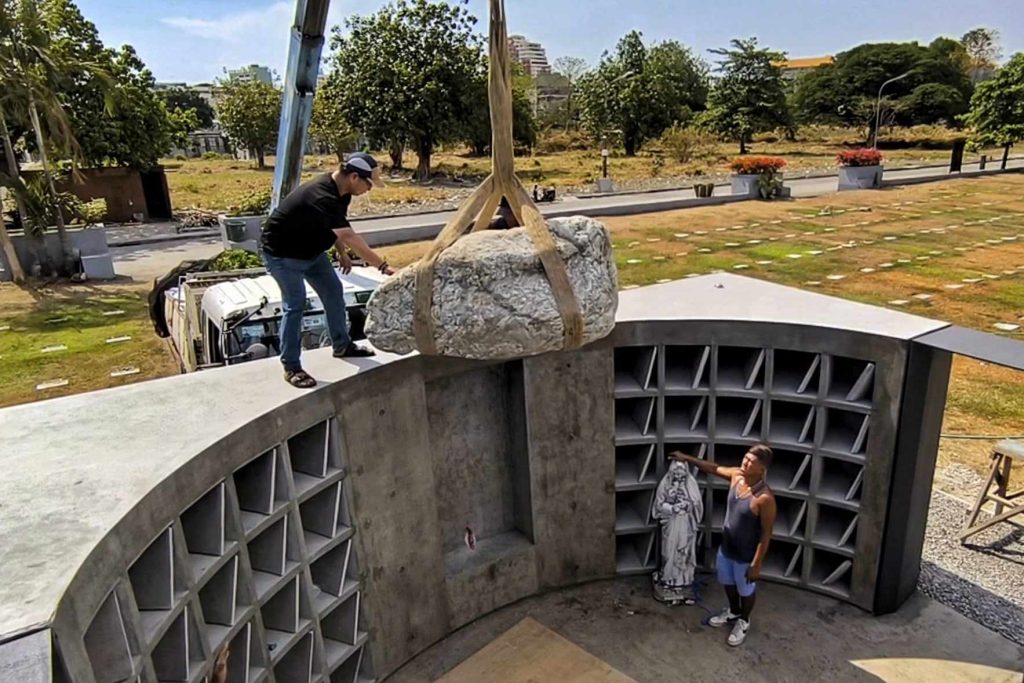In Laloma Catholic Cemetery in Caloocan City now stands a solemn memorial, a place where grief and hope intertwine. It is called the Dambana ng Paghilom (Shrine of Healing).
This sacred ground holds a profound purpose: to remember and honor the victims of extrajudicial killings (EJKs) during former Philippine President Rodrigo Duterte’s so-called drug war that ravaged the nation.
Fr. Flaviano “Flavie” L. Villanueva, SVD, founder and president of the Arnold Janssen Kalinga Foundation Inc., and Program Paghilom spearheaded the creation of the memorial with unwavering determination.

After securing a 36-square-meter plot of land generously donated by the Diocese of Kalookan within the cemetery, and with the help of volunteer donors, the memorial was made possible.
On May 1, 2024, priests and families gathered at the memorial. They blessed the shrine, invoking healing and solace for the families who had suffered.
The first inurnment took place, honoring eleven victims who found their final resting place within the vaults of the shrine.
Among the mourners was Aurora Blas, a widow who had lost her husband to the drug war. Her husband’s death certificate falsely attributed his death to pneumonia, concealing the truth: gunshot wounds to the head, as revealed by forensic pathologist Dr. Raquel Fortun, with assistance from Program Paghilom.
Now, she could finally expose the truth about her husband’s fate. She shared her story with others, hoping it would serve as a wake-up call, a stark reminder of the severity of injustice in the country.
The shrine is not just a physical structure. Inside, a cross stands as a symbol of hope, with an eternal flame at the center, while a statue of what seems to be a blindfolded Mother Mary represents the undying quest for truth and justice. It stands as a symbol of resistance against violence and injustice.
The shrine tells stories of lives cut short by human injustices. With 100 vaults, it can hold more than 600 urns. As of now, Program Paghilom has already exhumed the remains of 101 victims, who will be in line for the next inurnment.
The memorial aims to raise awareness about the severity of EJKs and the impact they have on families and communities. It challenges the culture of impunity by emphasizing the value of every life lost.
It is a place where the truth will not be buried beneath bureaucratic lies. Families, once unable to prioritize securing their loved ones’ remains due to poverty, now have a concrete place to honor, remember, and seek justice.
It will remind our society of the need for justice, accountability, and compassion, and to advocate for human rights, transparency, and reforms in law enforcement practices.
It is a space for healing, reflection, and closure, allowing families to grieve collectively under the open sky, the souls of the departed to find solace, and the living to find the courage to demand truth and accountability.
Photos by Vincent Go and Dambana ng Paghilom